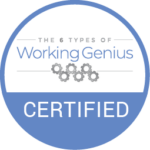We spoke with Diane Gould, President & CEO of Advocates in Framingham, MA about managing complex change. Why did you decide to invest in how your organization manages change? Like many organizations, we have a history of starting projects and six months later looking across the table asking, “whatever happened with that project?” We participated in an Afia webinar titled “Why Projects Fail,” and I remember thinking of several unsuccessful projects, realizing “that’s why it didn’t move;” it was enlightening. We’d just finished our strategic planning process for the coming year. It’s ambitious, and I decided that we needed to approach things differently. In order to succeed in our strategic initiatives, there was a compelling need to adjust how we go about our work. What was the process you undertook with your organization? Advocates brought in Afia Health for a high-level discussion with our leadership team and then with our strategic planning team. The first thing we did was implement a system of prioritization big projects, categorizing them into five high-level plans with 3-4 objectives and several priority activities under each. The methodology centered on five factors including ease of effort and revenue generation. All of the organizational changes we are implementing are so critical, so this wasn’t an easy exercise. We then took the change management framework and asked each team lead to develop a project statement that includes information relating to each area of the framework: project leads, key metrics, timelines, etc. Another key piece that is an ongoing work in progress is a governance structure for all of our strategic initiatives. We have a lot of high performers that are accustomed to operating independently. They were a bit hesitant with something that looked like it was potentially infringing on their autonomy. We had to be clear that we were creating a structure to support everyone in effectively tracking projects and to bring consistency to how we manage projects. We also created a new project management position and are moving toward having a Project Management Office. As many major change initiatives cross over multiple departments, we needed to define these projects as anything that is going to touch three or more parts of the organization and last longer than three months. Everything’s written down and it is amazing to see everything in one place. I don’t have to worry about projects; not knowing where we are with things. What’s been the biggest surprise in implementing a change management system? I typically work very organically; having these frameworks in place is new to me. I have a natural resistance to a lot of structure, and it all takes time that could be spent getting things done, but this is going really well. It has also challenged how I think. We have a monthly “solutions” meeting where we address problems and staff pain points. It’s not intuitive for me so there is a piece of learning here for me as well. Another piece is having Matt [from Afia] supporting and challenging us to change. He’s done a great job leading where we needed him to lead; sitting back and watching us work through things when we needed to, and he’s continuing to work with our core group. Implementing a change management structure hasn’t been easy but it is helping everyone communicate better and it keeps all of our strategic initiatives on track. We’re a big organization now and we need new ways to work. What advice do you have for other CEOs?
The speed of growth and complexity of change in our industry requires provider organizations to get our strategy right. It is critical that when we start something, we are able to see it through to its conclusion. We can’t afford to lose track of any of the essential changes that need to be implemented. As a CEO, one of the big values of investing in a change management structure is that I can stop thinking about whether our initiatives are on track. I have a structure that helps keep everyone accountable. I can focus on the things I need to take care of and not on whether individual project activities are completed. Implementing a change management structure has been extremely liberating.




